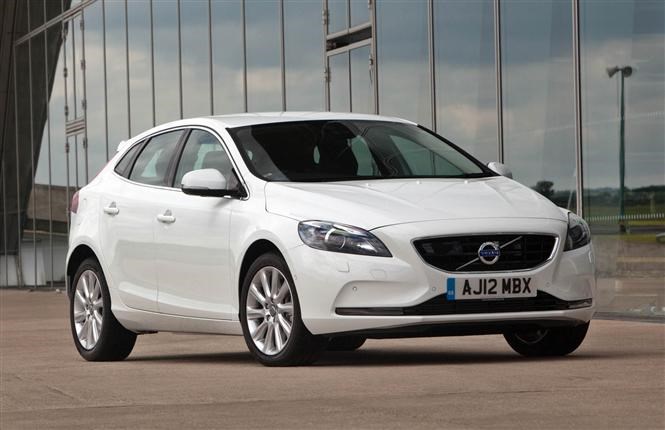Around 70 percent of Volvo V40 sales go straight to the company car market. It’s not difficult to work out why – with economical engines, a desirable design and ground-breaking safety kit just some of the cars highlights.
So you’ve decided you want a V40 as your next company car, but which engine should you choose and which trim level offers the most value for money?
To help, we’ve had a look through the range to help you make the right decision as to which makes the most sense as a company car, including any optional extras that may be worth a look.
Petrol or diesel
The V40 has an impressive engine line-up to choose from with CO2 emissions starting as low as 88g/km and fuel economy as high as 83mpg.
If you are a low-mileage driver then petrol could be a worthy consideration as it is generally around £2,000 cheaper than the diesel options, not to mention the savings to be made at the pumps too since petrol itself works out cheaper to buy than diesel.
However, those savings will get dented quite a lot when it comes to fuel economy and company car tax. The cleanest petrol has 124g/km of CO2 and sits in a 17 percent BIK tax band for the 2014/15 tax year verses the 88g/km D2 manual diesel which sits in a 14 percent band.
So if you do drive a fair amount of miles each year (over 10,000 miles is generally the tipping point although with the impressive figures on offer here we expect it to be less) then we think diesel is the way to go.
Our choice of the range would be the ultra efficicent 1.6-litre diesel with a manual gearbox, specifying the Powershift gearbox not only hikes the price up almost £1,500 but also pushes emissions over 100g/km. Also our experiences with the automatic gearbox were not great when we had a long term test car earlier in the year.
.jpg)
Trim level
The V40 range has five trim levels; ES, SE, SE LUX, R-Design and R-Design Lux.
SE offers the best level of kit for the price. Highlights include 16-inch alloy wheels, automatic wipers, DAB Radio, leather gearknob and steering wheel, cruise control, front armrest and numerous safety systems.
Move up the trim levels and the price starts to jump up quite significantly and the additional kit doesn’t quite weigh up with the pricing either.
For those in the market for a sportier model, R-Design offers more muscular styling and a special interior trim but sits at the top end when it comes to price.
Optional extras
There are plenty of optional extras to choose from for the V40 and they are available in a variety of packs.
One of the key options worth considering is the Sensus Nav, which as the name suggests includes sat-nav and an upgraded sound system for a pretty pricey £1,200.
Our pick of the packs is the Winter/Winter Illumination Pack, which costs £1,350 and includes a heated windscreen, heated seats, headlamp cleaning system and various lighting touches around the cabin.
The Driver Support pack at £1,900 includes some useful additional safety features like Blind Spot Monitoring, Lane Keeping Assist and a collision warning system, but we’re not sure it’s worth the premium as the V40 is statistically one of the safest cars on the road according to the Euro NCAP crash tests.
There is also a Sports pack available which costs £675 and includes a lowered sports suspension, adjustable steering and tinted glass. It’s a personal thing, but we’d choose to save the cash here too.
.jpg)
Verdict
We would go for the V40 D2 SE with a P11D price of £22,065 meaning monthly tax costs of £51.50 per month for a 20 percent taxpayer. As for the options we would pick the Winter/Winter Illumination Pack and the Sensus Nav giving a final price of £24,615 which equates to tax costs for a 20 percent tax payer of £57.44 per month.





